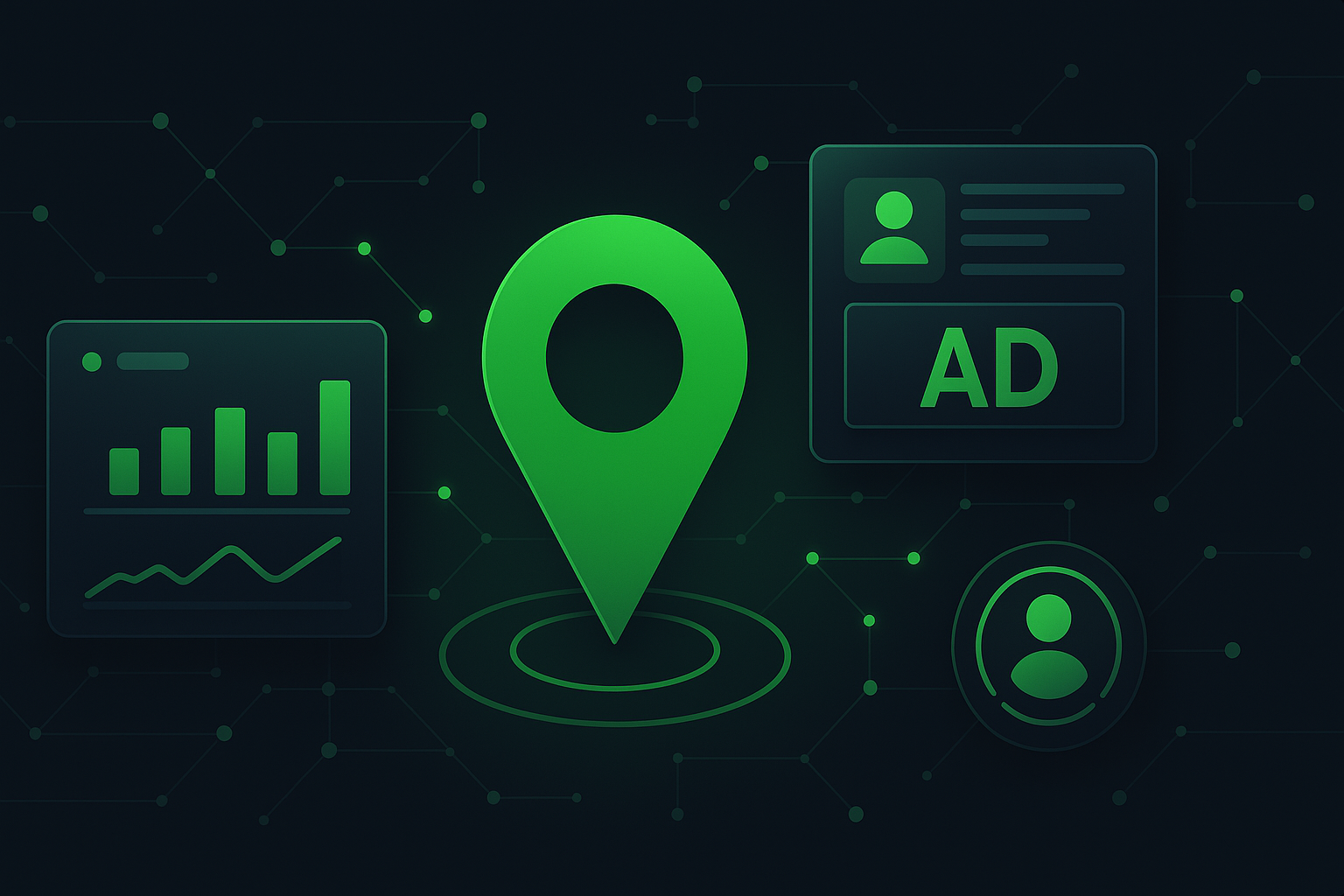
Location-Based Targeting: How AI Turns Coordinates into Conversions
What Is Location-Based Targeting
Location-based targeting is the practice of delivering an ad to a mobile device that is physically inside, near, or has recently visited a point of interest, be that a dealership forecourt, a flagship store, or an airport arrivals hall. The tactic relies on consented GPS or Wi-Fi signals collected by apps signals that are then enriched with historical visitation, demographic overlays and, increasingly, real-time AI propensity scores.
For CMOs, that combination of scale, intent and measurability represents a once-in-a-decade opportunity to replace broad awareness buys with bottom-funnel impact that the finance team can track all the way to tills and booking engines.
Key Insights Shaping LBT in 2025
# | Insight | Why It Matters |
|---|---|---|
1. Budget gravity | Analysts peg Location Based Targeting at US $296 B by 2030 and US $225 B by 2030. | Growing spend means more premium inventory and competitive CPMs. |
2. Intent ≈ immediacy | 76 % of “near me” seekers visit within 24 h; 50 % buy. | Captures moments other channels miss. |
3. AI-driven prediction | Vendors blend location, weather, events and stock feeds to predict purchase propensity. | Ads trigger before the consumer actively searches. |
4. Footfall proof | A luxury dealership geo-conquest lifted showroom traffic by 22 %. | Hard KPIs resonate with CFOs. |
5. Retail ROI | Continuous geo-ad optimization lifts retail ROI by 35 % on average. | Shows the compounding effect of always-on optimization. |
6. DOOH + telco data | T-Mobile’s US $600 M purchase of Vistar Media signals a cross-screen, data-rich DOOH future. | Expect seamless reach “from pocket to billboard”. |
Deep Dive – Industry Playbooks
1. Automotive – Geo-Conquesting the Rival Lot
Tactic
Draw 100-m geofences around competitor dealerships.
Retarget devices detected there in the past 30 days with model-specific offers and easy test-drive booking links.
Pause impressions once the same device pings on your own forecourt, conserving budget.
Impact
A multi-brand dealer that layered Experian auto-intender lists onto geo-conquest fences saw a 22 % lift in verified footfall and a 16 % lower cost-per-lead than paid-search retargeting.
2. Retail – Visitation-Based Targeting & Geo-Conquesting
Tactic
Place 100-m fences around both your stores and key competitors in high-street or mall locations.
Build “high-value visitor” segments, e.g., devices that have entered your store twice in 90 days, and serve VIP coupons.
Trigger conquest ads within 30 minutes of a shopper exiting a rival location to tempt a follow-up visit.
Impact
A national apparel chain geofencing 300 competitor doors achieved a 14 % lift in verified walk-ins and a 9 % lower cost-per-store-visit versus broad radius targeting.
3. Hospitality & Tourism – From Arrivals Hall to Room Key
Tactic
Ring-fence arrival gates, major attractions and transport hubs with 200-m GPS fences.
Serve language-specific creative to devices from priority origin markets the moment they land.
Retarget tourists detected near partner attractions with offers for hotel upgrades, spa bundles or city-pass discounts.
After check-out, re-engage the same devices back home with loyalty-programme incentives for repeat visits.
Impact
Choice Hotels used a 30-day geo-blitz around airports and city hotspots to generate a 10× return on ad spend and a measurable spike in direct bookings.
The MetriClix Advantage

Every second, millions of intent-rich location signals flow across the UAE and KSA. At Metriclix, we fuse that consented geo-data with predictive AI and cross-screen activation to convert footsteps into customers.
Ready to turn "Nearby" into "Now-Buy"? Book a 30-minute geo-strategy session and receive a complementary audit of the coordinates that matter most to your brand.